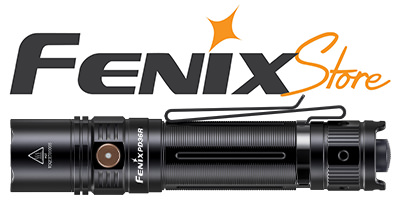HKJ
Flashaholic
[size=+3]La Crosse RS1020[/size]
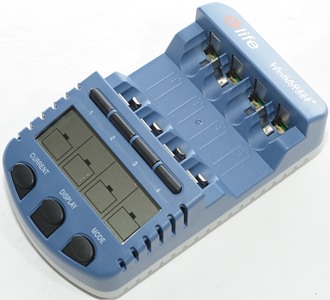
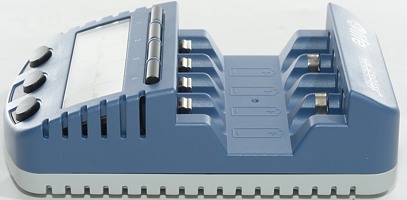
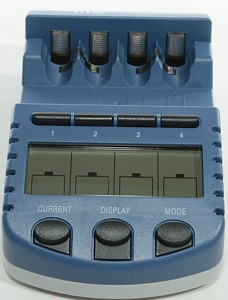
La Crosse has a couple of analyzing NiMH chargers, this is the new top model. It can handle up to four NiMH batteries.




The charger arrives in a cardboard box with a illustration of the display.
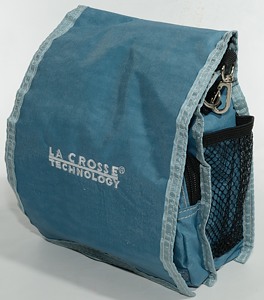
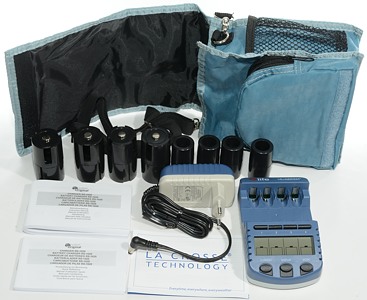
Inside the box is a bag, the charger and all accessories are in the bag.
This is the charger, a power supply, 4 C cell adapter and 4 D cell adapters, two manuals and a shoulder strap for the bag.
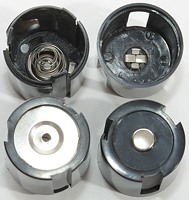
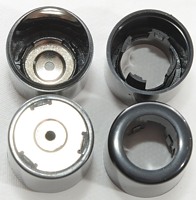
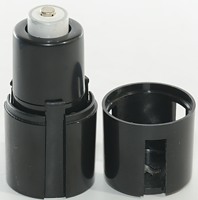
The C and D adapters is one set of 4, the C adapters must be placed inside the D adapter for the D adapters to work.
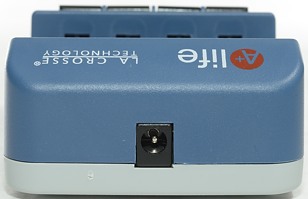
The charger has the usual DC barrel connector, but only the supplied charger can be used, because the input voltage is 3 volt, not the usual 12 volt. Because a lot of current is needed at this low voltage the charger has an extra thick DC cable.
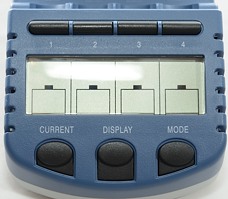
The user interface is a display and 7 buttons. The top row of buttons is used to select specific charger slots.
The bottom 3 is for function, current and what is shown in the display.
The charger has 4 functions:
To change function the "mode" key must be held down for about 1 second, then each press will change between the above mode.
The current key can be used when a battery is put into the charger or after a mode change.
The display key is used to select between current (mA), time (hh:mm), voltage (V) and capacity (mAh or Ah), for either all slots or a single slot.
When only using slot #1 and/or slot #4 it is possible to select these currents: 200, 500, 700, 1000, 1500, 1800mA
When slot #2 and/or #3 is used, all slots are limited to: 200, 500, 700, 1000mA
For discharge it is possible to use: 100, 250, 350, 500mA
When batteries is put into the charger, the default is to select mode and current for all slots. Using the numeric keys, it is possible to configure a single slot.
The charger has a interlock, when the current for the first battery in the charger is locked, no other battery can be charged with higher current!
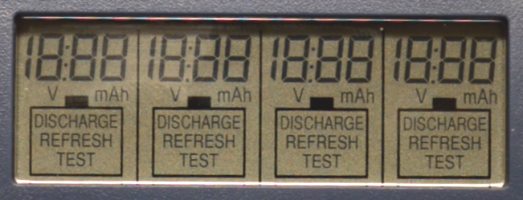
This picture shows all the text and symbols in the display.
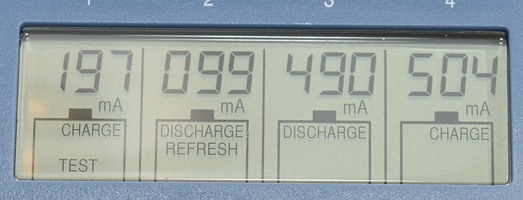
When the charger is busy it shows the selected mode and with the display button it is possible to select between current (mA), time (hh:mm), voltage (V) and capacity (mAh or Ah), for either all slots or a single slot.
The current will show the charge, discharge or trickle current.
The time will show the elapsed time of the last operation (I.e. charge or discharge, not the time for the full program), for operations longer than 20 hours it will start from 0 again.
The capacity will show the accumulated capacity, when the charger is finished this will be the charger capacity in charge and discharge mode and discharge capacity in discharge and refresh mode.
Voltage will always be the instantaneous voltage, measured with charge/discharge current off.
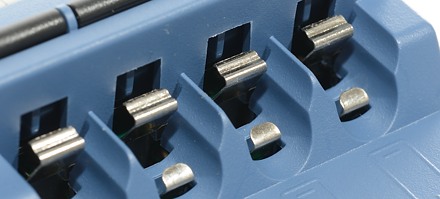
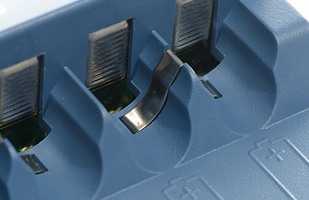
The slots has two steps, one for AA and one for AAA batteries. The temperature sensor is shared between two batteries.
The slots are very close together and the charger does not have a fan, this can lead to high battery temperature.
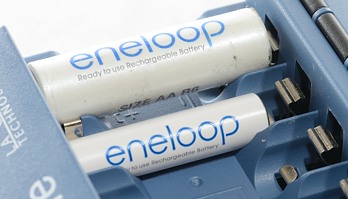
The charger loaded with both a AA and a AAA battery.
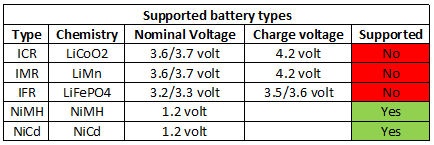

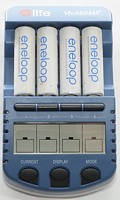
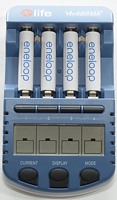
[size=+2]Measurements[/size]
[size=+2]CHARGE, charging batteries[/size]
This function will charge the batteries with a selected current.
When only using slot #1 and/or slot #4 it is possible to select these currents: 200, 500, 700, 1000, 1500, 1800mA
When slot #2 and/or #3 is used, all slots are limited to: 200, 500, 700, 1000mA
The display will show the charged capacity.
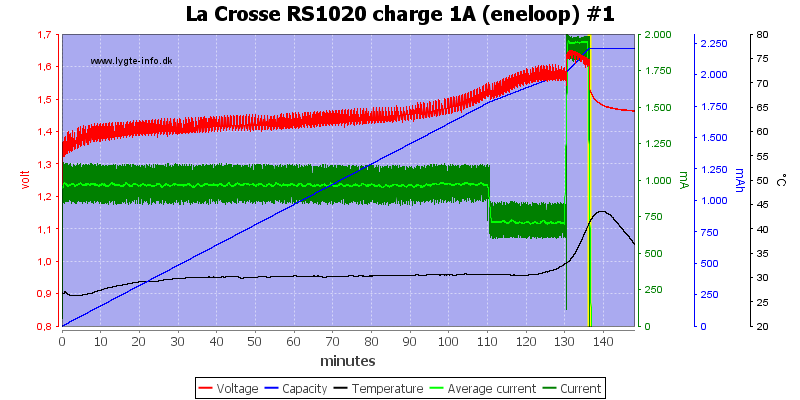
The charger is pulsing, but faster than my DMM's is measuring. The charge curve as a very strange termination, first the charge current drops, then it raises to a very high value, before the charge stops. Looking at the temperature trace it looks like the battery was filled.
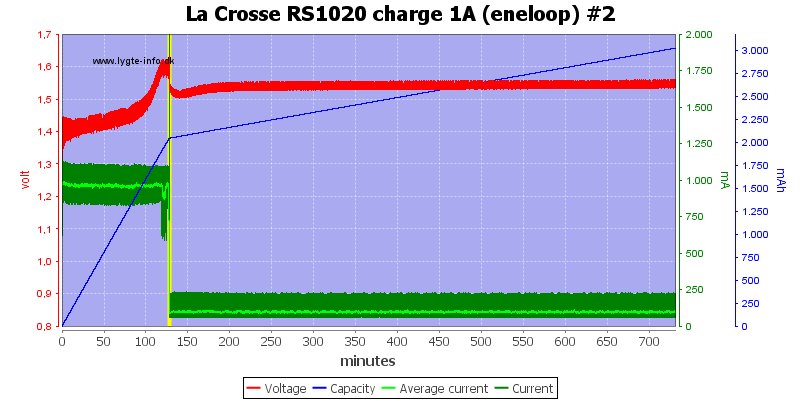
This time I let the battery stay in the charger about 10 hours after the charge was finished. The charger used that time to add about 1000mAh with trickle charging, this is not very good.
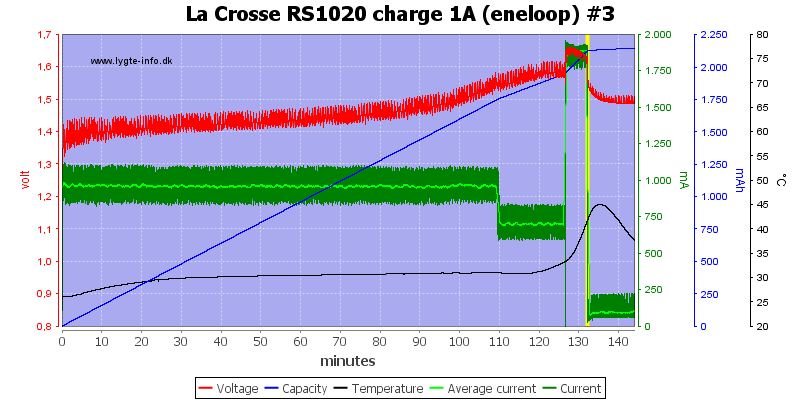
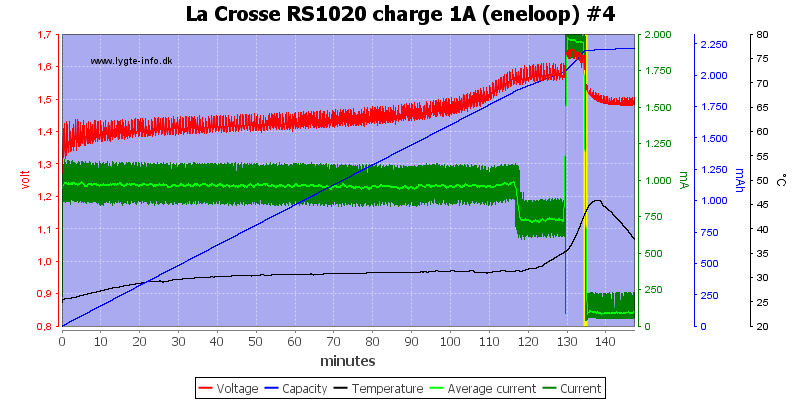
Both channel 3 and 4 look like the first with the strange termination.
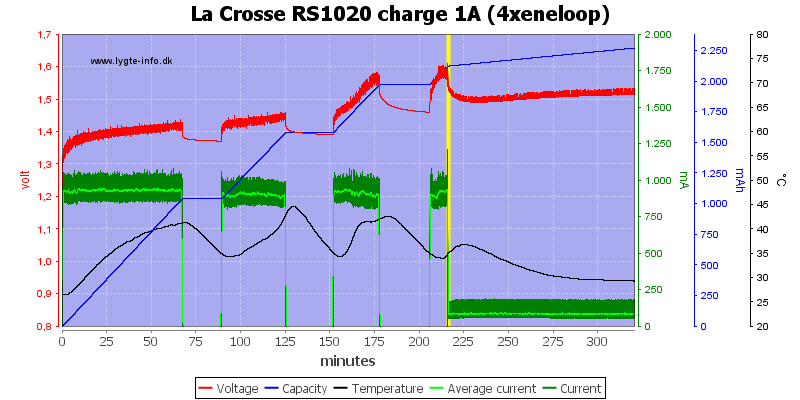
With four batteries in the charger, it gets hot, but it has temperature sensors and will pause during charge, to limit the maximum temperature. This does slow down the charger and prevents it from being "ultra fast" as the box says. The manual recommends to user a lower charge current if these pauses occur frequently.
The termination looks fairly normal here, no final high current charge.
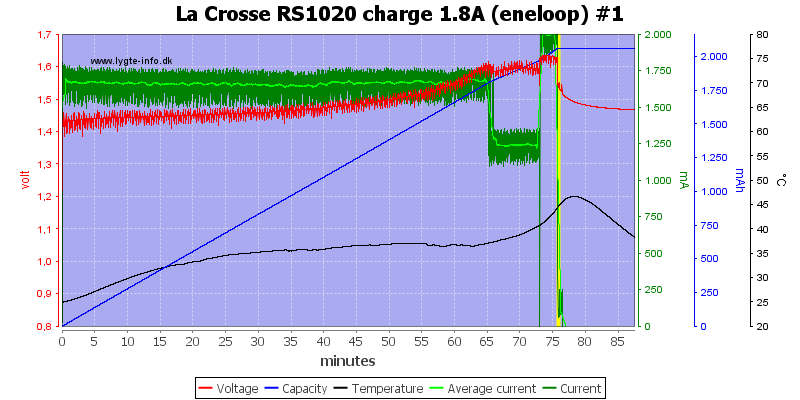
With only batteries in slot #1 and/or #4, it is possible to charger with 1.8A. The charger does still do the strange termination.
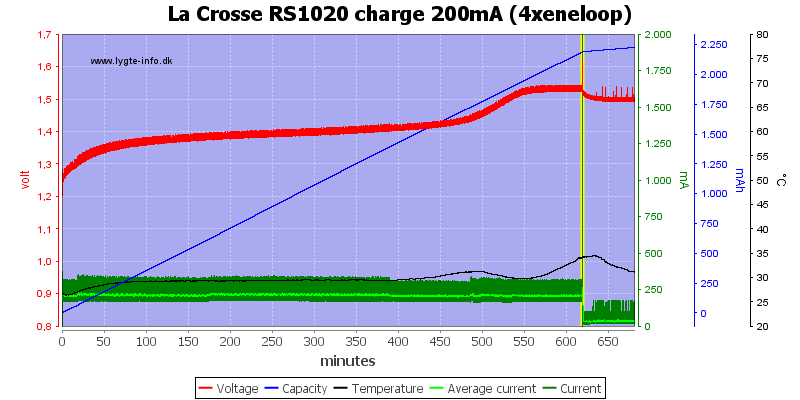
Using a very low charge current, the termination looks normal and the trickle charger is lower.
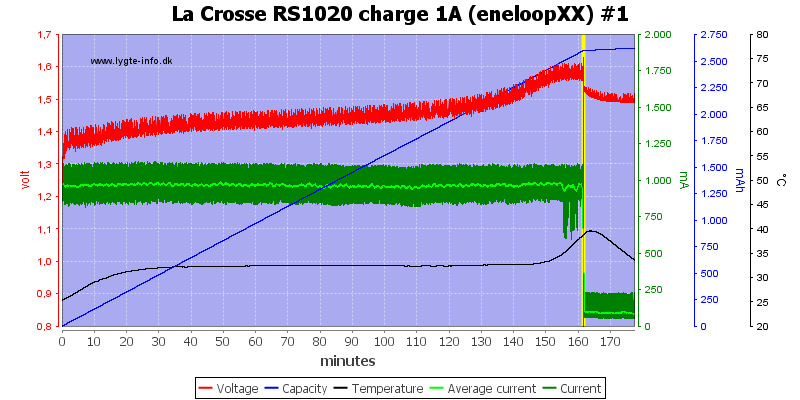
This look like a normal charge with -dv/dt termination.
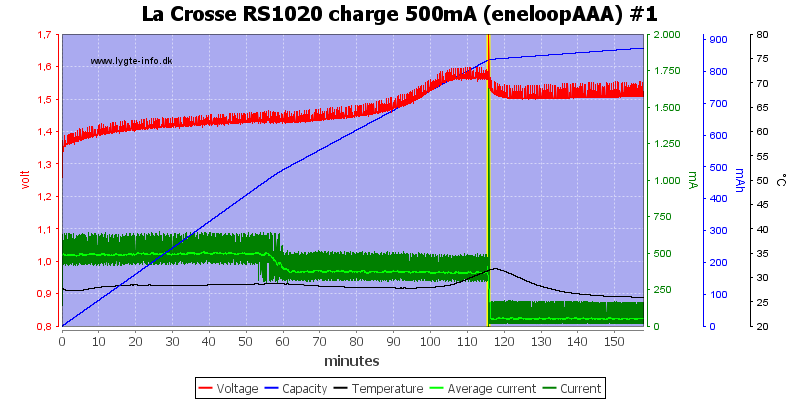
With the small cell, the charger reduces the current and does a normal -dv/dt termination.
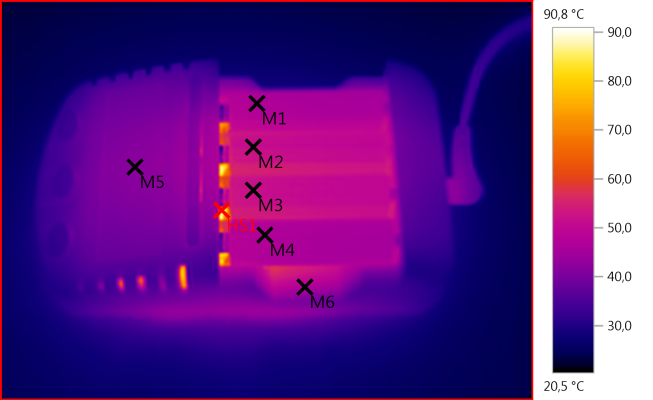
M1: 47,1°C, M2: 51,3°C, M3: 52,1°C, M4: 47,1°C, M5: 41,9°C, M6: 46,7°C, HS1: 90,8°C
During charge both batteries and charger gets fairly warm and somewhere inside the charger there is something getting hot (As long as the charger is designed for it, it is fine).
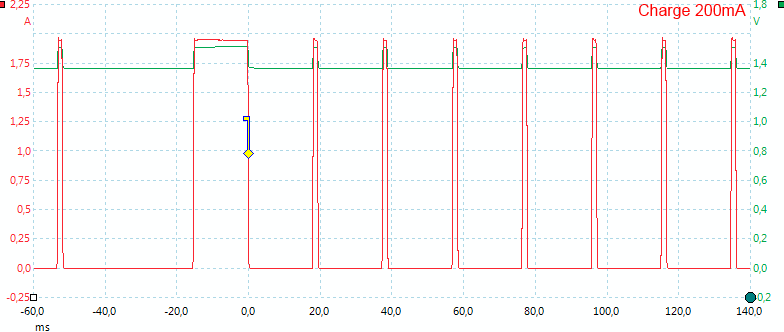
As usual with this type of charge, the actual charging is done with pulses
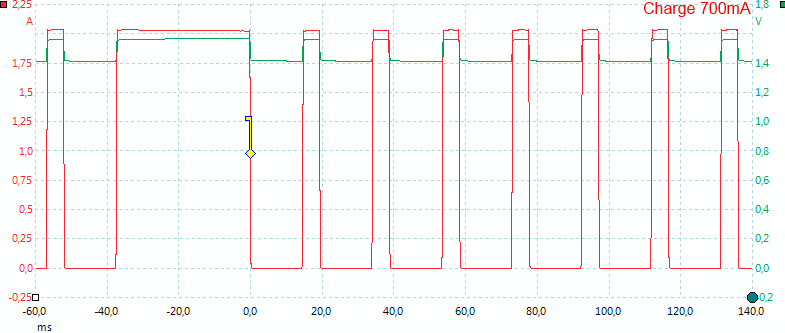
Higher current makes the pulses wider. The charger has some extra wide pulses and also some short pauses in the charging. The pauses might be to measure the voltage, but I have no idea about the wide pulses.
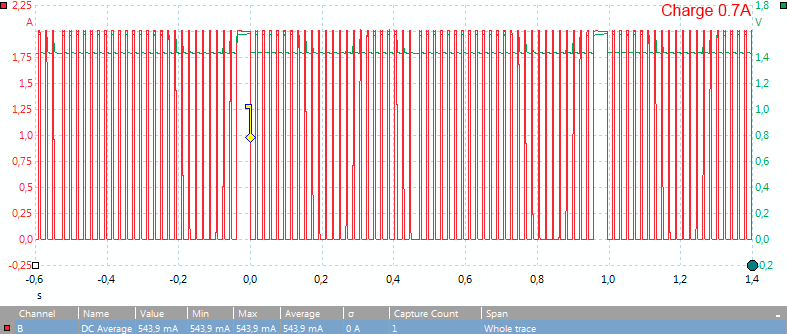
Here is a longer time frame, where both the long pulses and the pulses can be seen.
Also note that the average current is not 708mA as the display says, but considerable lower. This shows that the charger does not directly measure the current and that my 0.1ohm series resistor used to pickup current for the oscilloscope is affecting the charge (For normal test I uses a resistor 10 times smaller, to avoid this).
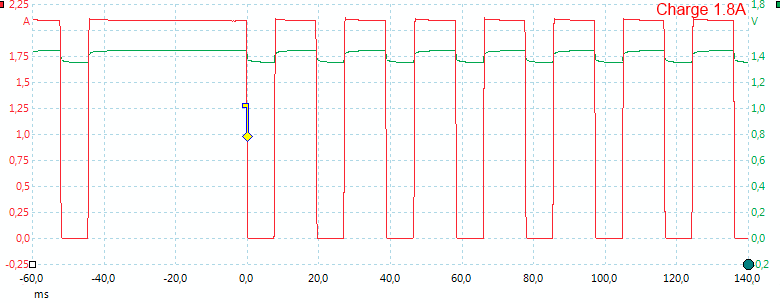
Full 1.8A charge current.
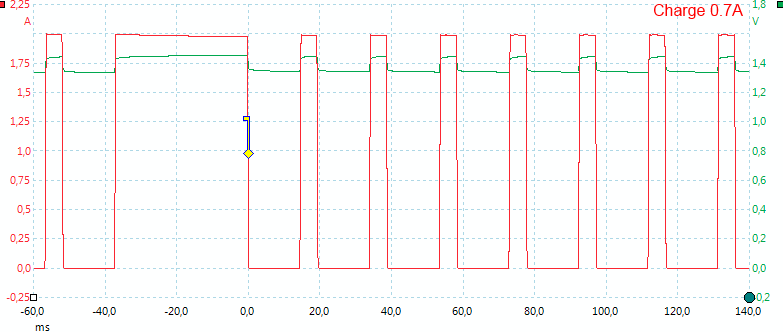
A AAA cell in slot #2. This slot has a maximum charge current of 1A (Not 1.8A as slot #1). The current pulses are exactly the same, i.e. the limits are software.
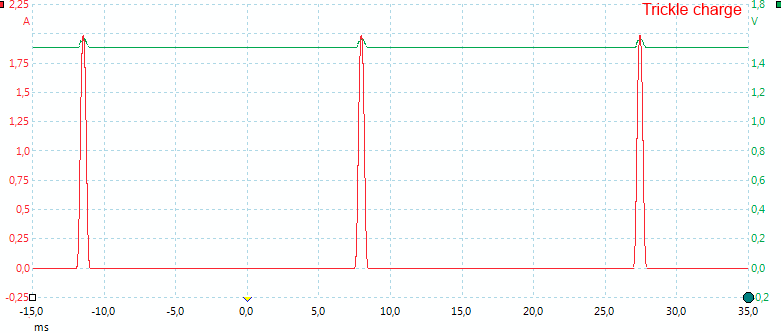
When finished with charging the charger will switch to trickle charge. This is also done with high current pulses.
[size=+2]DISCHARGE, discharging batteries[/size]
This function will discharge batteries to 0.9 volt with a selected current, when finished with the discharge it will charge the batteries with twice the selected discharge current.
The display will show the charged capacity.
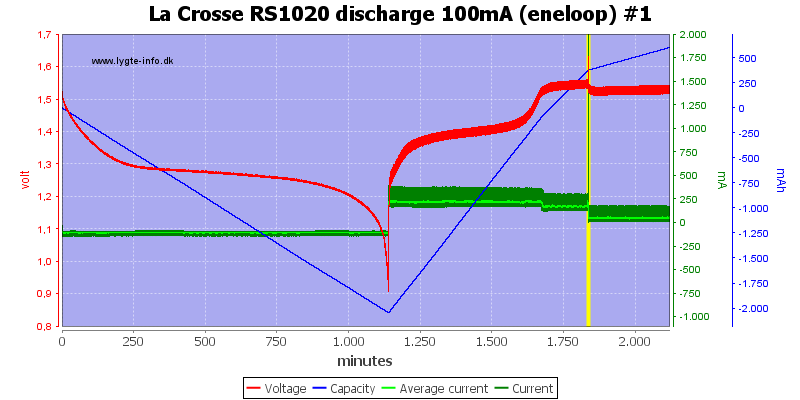
Discharging a battery with 100mA takes a long time. The charger handles it fine.
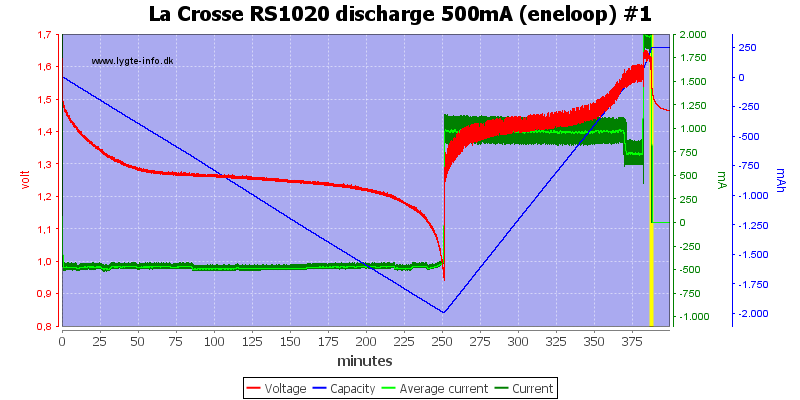
Here I am discharging with maximum discharge current (i.e. 0.5A).
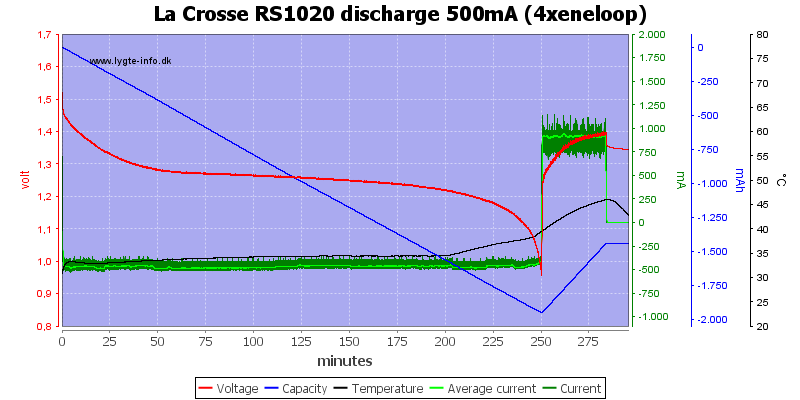
Discharging 4 batteries at maximum discharge current.
Note: I did stop the test premature, i.e. when the charger took the first break during the following charge.
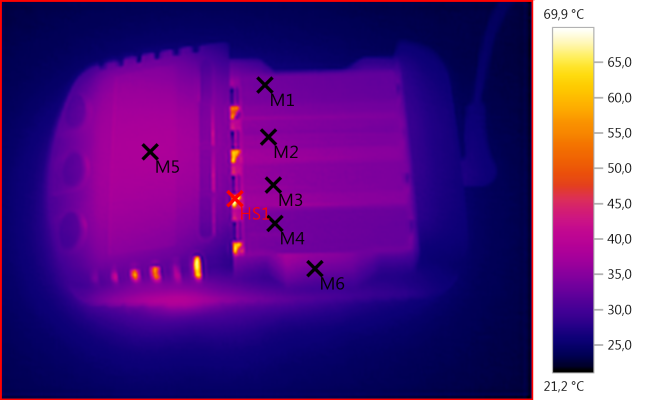
M1: 33,5°C, M2: 35,7°C, M3: 35,7°C, M4: 33,7°C, M5: 38,1°C, M6: 33,5°C, HS1: 69,9°C
During discharge the batteries gets warm.
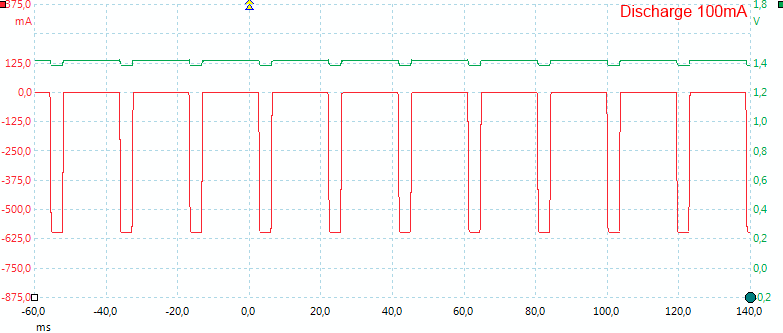
The discharge is done with pulses.
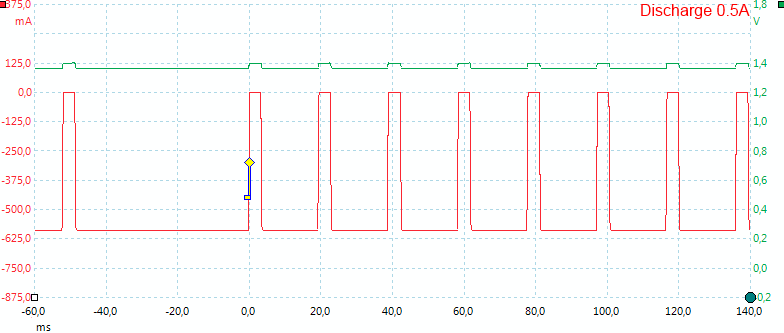
And the width is, of course, depend on the required current.
[size=+2]DISCHARGE REFRESH[/size]
Cycle the batteries a unspecific number of times. The charger decides the number on cycles, based on the improvement in battery capacity for each cycle.
This is a very slow operation that can take days.
The display will show the discharged capacity for the last cycle.
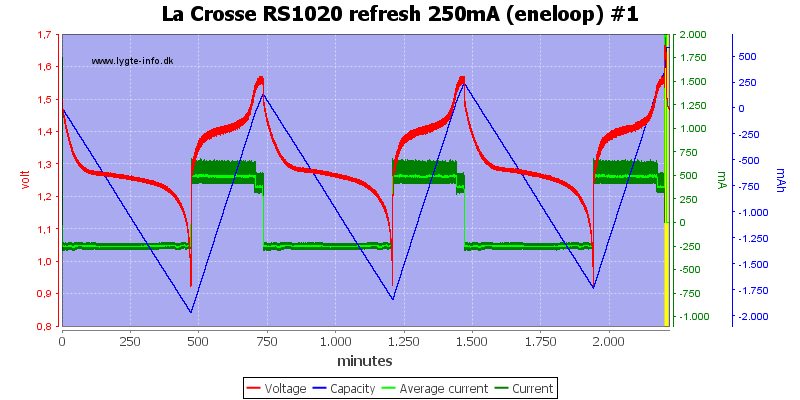
In my test the charger used 3 cycles for this battery.
[size=+2]CHARGE TEST[/size]
This mode is designed to measure battery capacity. The batteries are first charged, then discharged and then charged again.
The display will show the discharged capacity.
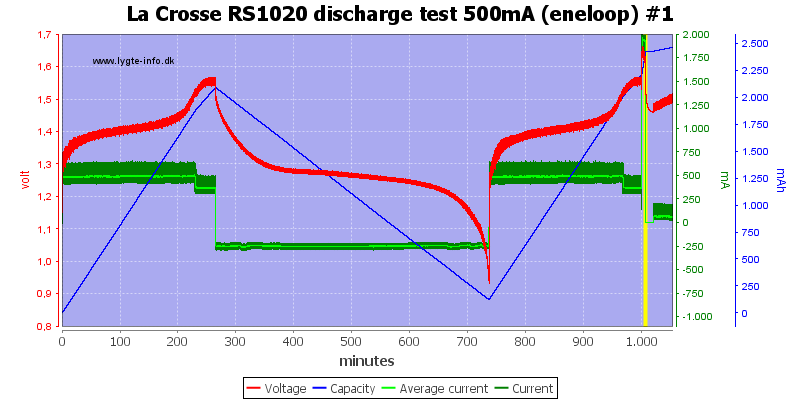
The charger does the test without any pause between the cycles.
As usual the discharge current is half the charge current.
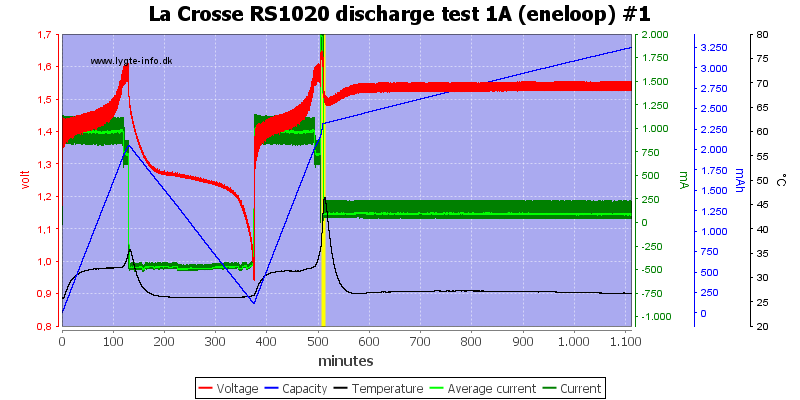
Increasing the current makes the cycle faster.
Testing the mains transformer with 2500 volt and 5000 volt between mains and low volt side, did not show any safety problems.
[size=+2]Conclusion[/size]
The charger uses some strange algorithms, but it looks like it fill the batteries correctly every time and then it overcharges them with a high trickle current (It is best to remove the batteries when the charger says it is finished). The temperature does get fairly high during charge at full current, but the charger has over temperature protection.
The idea with always charging the batteries after all tests, is probably good for battery life, but I would have preferred a way to discharge batteries.
I do not really know what to say about all the accessories, the bag would have been more useful if a car adapter had been included.
The conclusion must be that it is a acceptable charger, it does what it is supposed to do and I have not seen any problems, except the heat.
[size=+3]Notes[/size]
Here is an explanation on how I did the above charge curves: How do I test a charger



La Crosse has a couple of analyzing NiMH chargers, this is the new top model. It can handle up to four NiMH batteries.




The charger arrives in a cardboard box with a illustration of the display.


Inside the box is a bag, the charger and all accessories are in the bag.
This is the charger, a power supply, 4 C cell adapter and 4 D cell adapters, two manuals and a shoulder strap for the bag.



The C and D adapters is one set of 4, the C adapters must be placed inside the D adapter for the D adapters to work.

The charger has the usual DC barrel connector, but only the supplied charger can be used, because the input voltage is 3 volt, not the usual 12 volt. Because a lot of current is needed at this low voltage the charger has an extra thick DC cable.

The user interface is a display and 7 buttons. The top row of buttons is used to select specific charger slots.
The bottom 3 is for function, current and what is shown in the display.
The charger has 4 functions:
- CHARGE: Charge batteries
- DISCHARGE: Discharge, then charge.
- DISCHARGE REFRESH: Cycle the battery a unspecific number of times
- CHARGE TEST: Discharge, while measuring capacity. The function includes a charge both before and after.
To change function the "mode" key must be held down for about 1 second, then each press will change between the above mode.
The current key can be used when a battery is put into the charger or after a mode change.
The display key is used to select between current (mA), time (hh:mm), voltage (V) and capacity (mAh or Ah), for either all slots or a single slot.
When only using slot #1 and/or slot #4 it is possible to select these currents: 200, 500, 700, 1000, 1500, 1800mA
When slot #2 and/or #3 is used, all slots are limited to: 200, 500, 700, 1000mA
For discharge it is possible to use: 100, 250, 350, 500mA
When batteries is put into the charger, the default is to select mode and current for all slots. Using the numeric keys, it is possible to configure a single slot.
The charger has a interlock, when the current for the first battery in the charger is locked, no other battery can be charged with higher current!

This picture shows all the text and symbols in the display.

When the charger is busy it shows the selected mode and with the display button it is possible to select between current (mA), time (hh:mm), voltage (V) and capacity (mAh or Ah), for either all slots or a single slot.
The current will show the charge, discharge or trickle current.
The time will show the elapsed time of the last operation (I.e. charge or discharge, not the time for the full program), for operations longer than 20 hours it will start from 0 again.
The capacity will show the accumulated capacity, when the charger is finished this will be the charger capacity in charge and discharge mode and discharge capacity in discharge and refresh mode.
Voltage will always be the instantaneous voltage, measured with charge/discharge current off.


The slots has two steps, one for AA and one for AAA batteries. The temperature sensor is shared between two batteries.
The slots are very close together and the charger does not have a fan, this can lead to high battery temperature.

The charger loaded with both a AA and a AAA battery.




[size=+2]Measurements[/size]
- When not connected to power it will discharge a full battery with about 2mA.
- Charger starts at about 0.5V battery voltage, i.e. totally discharged batteries cannot be charged.
- Voltmeter always measures with current off and works from 0.00 volt and at least to 1.50 volt
- Voltage readout on charger is within 0.01V
- Charge will restart charging after power loss or battery insertion.
- Default charge current is 0.2A (200mA) and charger will reset to that after a power loss or battery removal.
[size=+2]CHARGE, charging batteries[/size]
This function will charge the batteries with a selected current.
When only using slot #1 and/or slot #4 it is possible to select these currents: 200, 500, 700, 1000, 1500, 1800mA
When slot #2 and/or #3 is used, all slots are limited to: 200, 500, 700, 1000mA
The display will show the charged capacity.

The charger is pulsing, but faster than my DMM's is measuring. The charge curve as a very strange termination, first the charge current drops, then it raises to a very high value, before the charge stops. Looking at the temperature trace it looks like the battery was filled.

This time I let the battery stay in the charger about 10 hours after the charge was finished. The charger used that time to add about 1000mAh with trickle charging, this is not very good.


Both channel 3 and 4 look like the first with the strange termination.

With four batteries in the charger, it gets hot, but it has temperature sensors and will pause during charge, to limit the maximum temperature. This does slow down the charger and prevents it from being "ultra fast" as the box says. The manual recommends to user a lower charge current if these pauses occur frequently.
The termination looks fairly normal here, no final high current charge.

With only batteries in slot #1 and/or #4, it is possible to charger with 1.8A. The charger does still do the strange termination.

Using a very low charge current, the termination looks normal and the trickle charger is lower.

This look like a normal charge with -dv/dt termination.

With the small cell, the charger reduces the current and does a normal -dv/dt termination.

M1: 47,1°C, M2: 51,3°C, M3: 52,1°C, M4: 47,1°C, M5: 41,9°C, M6: 46,7°C, HS1: 90,8°C
During charge both batteries and charger gets fairly warm and somewhere inside the charger there is something getting hot (As long as the charger is designed for it, it is fine).

As usual with this type of charge, the actual charging is done with pulses

Higher current makes the pulses wider. The charger has some extra wide pulses and also some short pauses in the charging. The pauses might be to measure the voltage, but I have no idea about the wide pulses.

Here is a longer time frame, where both the long pulses and the pulses can be seen.
Also note that the average current is not 708mA as the display says, but considerable lower. This shows that the charger does not directly measure the current and that my 0.1ohm series resistor used to pickup current for the oscilloscope is affecting the charge (For normal test I uses a resistor 10 times smaller, to avoid this).

Full 1.8A charge current.

A AAA cell in slot #2. This slot has a maximum charge current of 1A (Not 1.8A as slot #1). The current pulses are exactly the same, i.e. the limits are software.

When finished with charging the charger will switch to trickle charge. This is also done with high current pulses.
[size=+2]DISCHARGE, discharging batteries[/size]
This function will discharge batteries to 0.9 volt with a selected current, when finished with the discharge it will charge the batteries with twice the selected discharge current.
The display will show the charged capacity.

Discharging a battery with 100mA takes a long time. The charger handles it fine.

Here I am discharging with maximum discharge current (i.e. 0.5A).

Discharging 4 batteries at maximum discharge current.
Note: I did stop the test premature, i.e. when the charger took the first break during the following charge.

M1: 33,5°C, M2: 35,7°C, M3: 35,7°C, M4: 33,7°C, M5: 38,1°C, M6: 33,5°C, HS1: 69,9°C
During discharge the batteries gets warm.

The discharge is done with pulses.

And the width is, of course, depend on the required current.
[size=+2]DISCHARGE REFRESH[/size]
Cycle the batteries a unspecific number of times. The charger decides the number on cycles, based on the improvement in battery capacity for each cycle.
This is a very slow operation that can take days.
The display will show the discharged capacity for the last cycle.

In my test the charger used 3 cycles for this battery.
[size=+2]CHARGE TEST[/size]
This mode is designed to measure battery capacity. The batteries are first charged, then discharged and then charged again.
The display will show the discharged capacity.

The charger does the test without any pause between the cycles.
As usual the discharge current is half the charge current.

Increasing the current makes the cycle faster.
Testing the mains transformer with 2500 volt and 5000 volt between mains and low volt side, did not show any safety problems.
[size=+2]Conclusion[/size]
The charger uses some strange algorithms, but it looks like it fill the batteries correctly every time and then it overcharges them with a high trickle current (It is best to remove the batteries when the charger says it is finished). The temperature does get fairly high during charge at full current, but the charger has over temperature protection.
The idea with always charging the batteries after all tests, is probably good for battery life, but I would have preferred a way to discharge batteries.
I do not really know what to say about all the accessories, the bag would have been more useful if a car adapter had been included.
The conclusion must be that it is a acceptable charger, it does what it is supposed to do and I have not seen any problems, except the heat.
[size=+3]Notes[/size]
Here is an explanation on how I did the above charge curves: How do I test a charger
